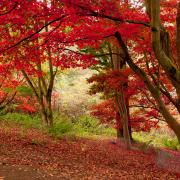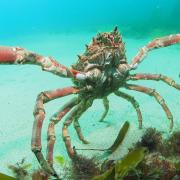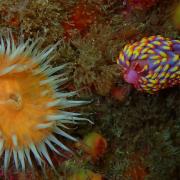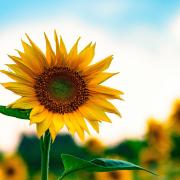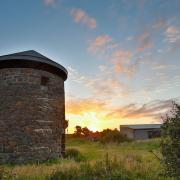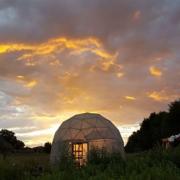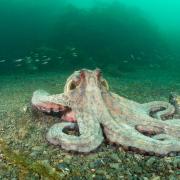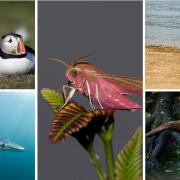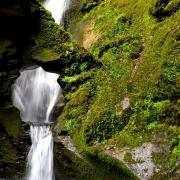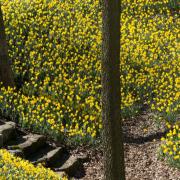Two summers ago David Chapman immersed myself in the life of a species of bird with which he had previously only brief and fleeting experiences.
Night by Name, Night by Nature
David Chapman explores the life of the enigmatic and nocturnal Nightjar.
Two summers ago I immersed myself in the life of a species of bird with which I had previously only brief and fleeting experiences. My ultimate aims were to learn more about the species and to photograph aspects of its behaviour but it was a difficult challenge because my target species was the enigmatic and nocturnal Nightjar.
The nightjar is a migratory species returning from Africa during May. As its name suggests, it is a nocturnal bird which flies around with its beak ajar essentially trawling the air for large flying insects, mainly moths. When at rest it seems to have quite a small beak but its mouth opens to reveal a huge gape, further enhanced and enlarged by bristles around its fringe that are sensitive to the touch.
Nightjars are quite strictly nocturnal but can be seen just before it gets dark. The vast majority are located by sound. They are well known for their drawn out churring call made by the male, which can be heard from up to a kilometre away. Listen carefully and you will hear that the churring is made in just two tones.
From my own observations it seems that during the day the female incubates her two eggs at a nest site on the ground, usually in an area of heathland, while the male sits tight possibly in a tree. At dusk the male knows he must take over incubation for a while to let the female feed. Before he does so he spends a little time confirming ownership of his territory.
A typical evening comprises firstly of a call from the male in the tree. This happens before he begins churring and must be a signal to his female that he is there and will be coming soon. His ‘coo-ick’ call has a frog-like tone, though louder and high-pitched. The then male flies to a song perch from which he will churr for an indeterminate period of time. Keen to show off for a while before taking on domestic duties, he performs an aerial display, consisting of a very buoyant flight while occasionally clapping his wings above his body in a surprisingly audible manner.
The white spots on his wings become quite noticeable in the semi-dark and his flight pattern – a mixture of hovering, fluttering and swift sorties – shows these off. The female must be pleased to see him coming when he eventually deigns to fly overhead. As he does so the ‘coo-ick’ call is uttered again, this time by both birds. This is a signal for the female to leave the nest and shortly afterwards the male drops down to incubate for a while.
The nest site is simply a bare patch on the ground without any nesting material added. The two marble-patterned, greyish-white eggs are laid on the ground and covered only by the incubating bird. As nightjars spend the entire day sitting motionless on a nest or in a tree it is important that they are well camouflaged; to me the plumage of the nightjar is one of its most amazing features. On the nest it remains perfectly still and simply dissolves into its surroundings. When at rest the nightjar’s huge eyes, which might otherwise give it away, remain almost completely closed.
The Photography
Being mysterious birds with an unfamiliar lifestyle, I was very aware that I would need to spend a lot of time studying their behaviour before I started to take any photos. By the end of the summer I had spent a total of 20 evenings with them and didn’t take a single picture.
On my first two visits I wandered along footpaths to see where the birds spent most of their time. Then, I focussed more closely on a certain area of heath where I had seen greatest activity, but still watched from a distance. I used a portable hide to get in closer to the area where the female regularly perched on fence posts.
In the final stages of preparation I fired a flash gun at her to see how she responded to it, in fact she didn’t visibly react to it. Only then did I feel confident about trying some photography. By this time I had located the nest site and this was important because I needed to be sure that I could establish a hide a safe distance away from it.
For most of my images I set up two flash guns aiming towards a favoured perch and then sat in a hide with my camera trained on it. I used a long telephoto lens so I could remain a safe distance away and I had to pre-focus the lens on the perch before it went dark.
As darkness fell it became impossible to focus, so when a nightjar landed on the post I took a photograph and hoped it would be sharp. Usually the bird remained on the post and often stayed quite still so I could check for sharpness on the camera’s viewer and if it wasn’t quite sharp I adjusted the focussing slightly and took the photo again.
Happily, for the five weeks that I spent watching this pair of nightjars they successfully raised their second brood of the summer.







